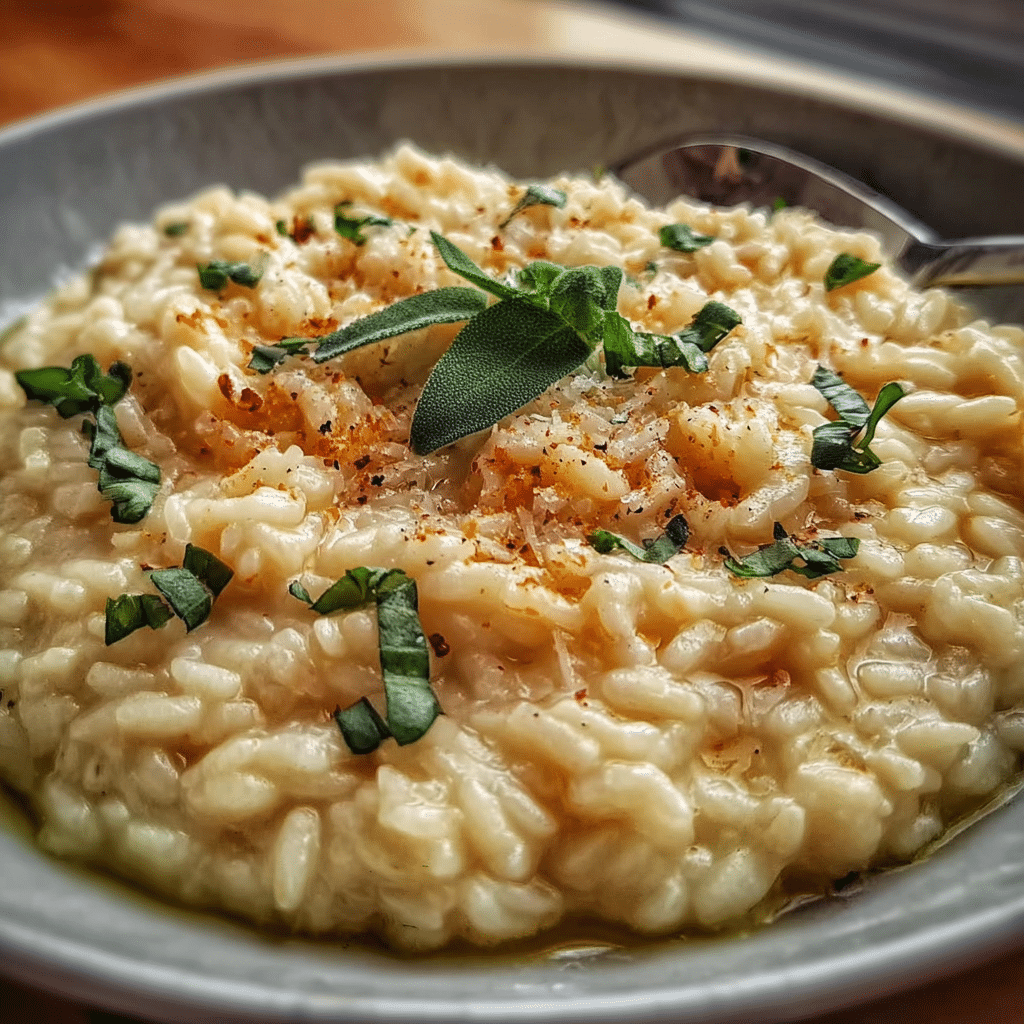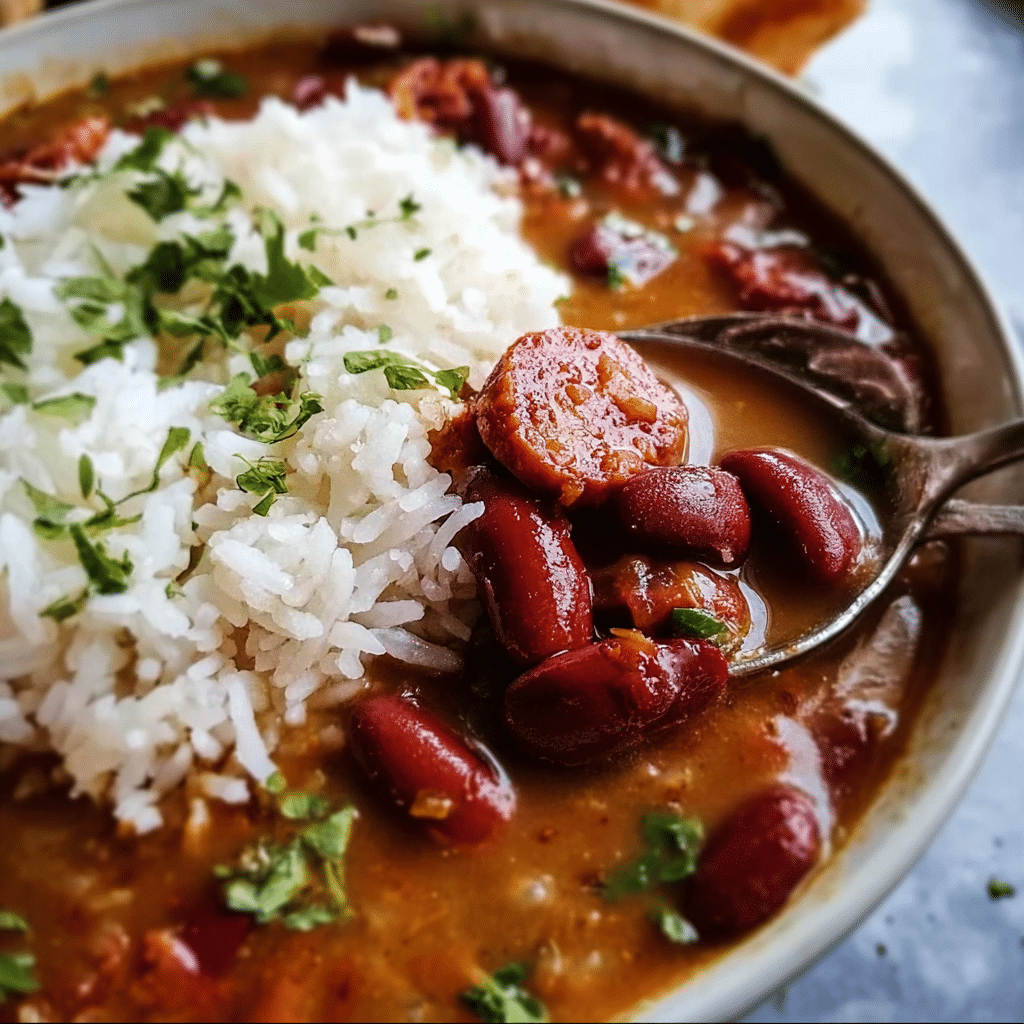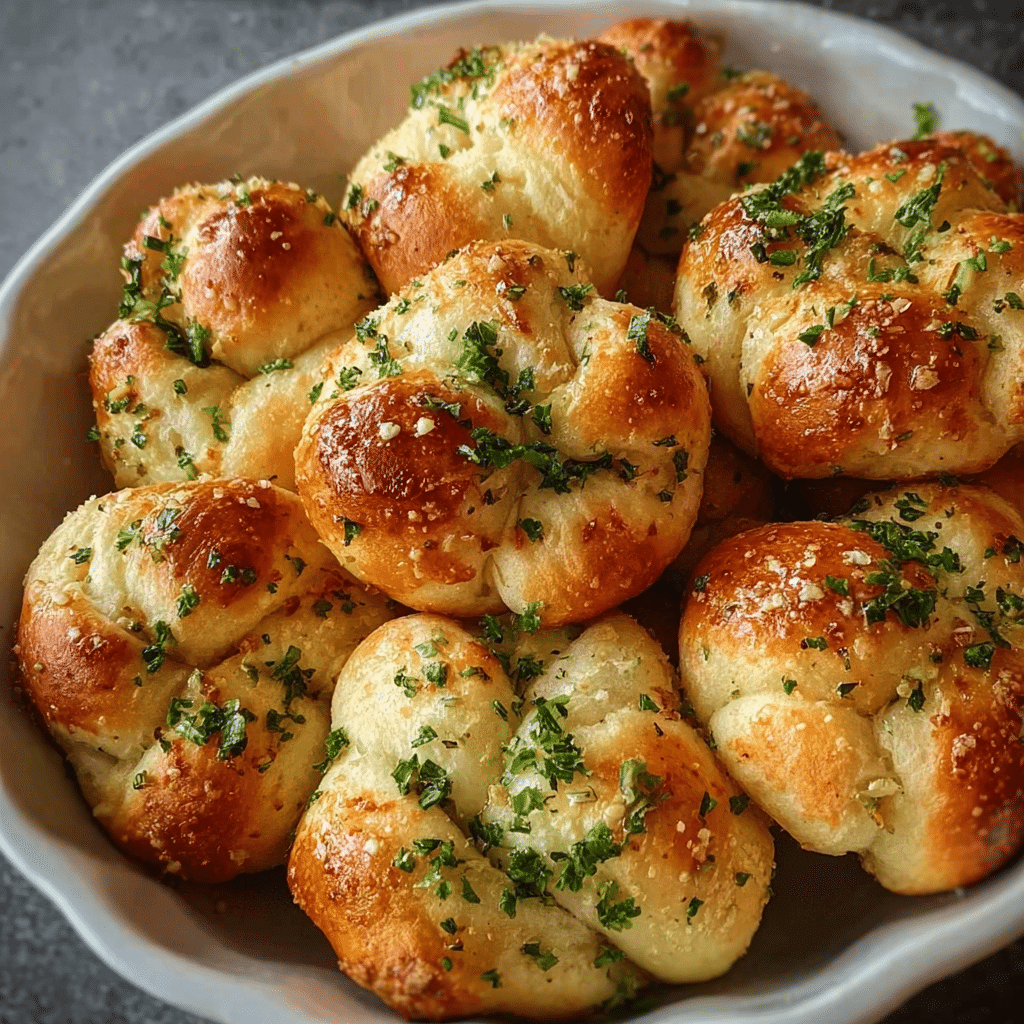Mini beef wellington is a delightful twist on the classic dish that marries tender beef with flaky pastry and a savory filling. The first time I encountered this culinary gem was at a friend’s holiday party. As I wandered through the elegantly decorated space, the aroma wafting from the kitchen drew me closer. It was there that I found these bite-sized wonders, golden brown and glistening under the soft lights. One bite, and I was hooked! The combination of the juicy beef, earthy mushrooms, and delicate puff pastry was nothing short of magical. I knew immediately that I had to recreate this dish at home.

In the weeks that followed, I dove into the world of mini beef wellingtons, experimenting with various fillings and pastry techniques. The joy of crafting these little delights became a cherished ritual in my kitchen, often shared with family and friends during special occasions. Each time I made them, I felt a connection not just to the dish itself, but to the warmth and love of those with whom I shared the experience. Mini beef wellingtons quickly became a staple in my home, perfect for both casual dinners and festive gatherings.
The Story Behind This Recipe
To understand mini beef wellington, we must first delve into its classic counterpart. Traditional beef wellington, believed to be named after the Duke of Wellington, is a dish steeped in history. It typically consists of a whole beef tenderloin coated with pâté and duxelles, wrapped in a layer of pastry, and baked to perfection. This sumptuous dish was a staple during elegant dinners and has become synonymous with celebration.
What makes mini beef wellingtons so special is their ability to capture the essence of the original while providing a convenient, bite-sized alternative. They are perfect for busy families looking for quick dinner solutions or a unique appetizer for gatherings. With the hustle and bustle of modern life, these mini delights offer a taste of luxury without the hours of preparation typically associated with traditional recipes.
Seasonal relevance plays a significant role in the appeal of mini beef wellingtons. They are an ideal choice for winter gatherings, holiday parties, or even as a comforting weeknight meal. Their rich flavors warm the soul, making them perfect for chilly evenings. Each time I serve them, I am reminded of the love and care that goes into cooking for those I cherish. It transforms not just the meal, but the entire atmosphere, creating lasting memories.
Why You’ll Love This Dish
As you embark on your journey to master mini beef wellingtons, you can expect to learn not just about the recipes and techniques, but also about the joy of cooking. This dish invites creativity; you can customize the fillings to suit your family’s tastes or dietary restrictions. Perhaps you want to include spinach for a pop of color or experiment with different herbs to elevate the flavor profile. The possibilities are endless!
In this guide, we will explore everything from the history of mini beef wellingtons to detailed recipes and tips for perfecting your technique. Whether you’re a novice cook or a seasoned chef, I promise you’ll find something valuable and inspiring. Get ready to impress your family and friends with this extraordinary dish that brings people together, one bite at a time!
The Rich History and Cultural Significance of mini beef wellington
The rich history and cultural significance of mini beef wellington can be traced back to its classic predecessor, the traditional beef wellington. Originating in the early 19th century, this dish has become a symbol of British cuisine. While the exact origins are somewhat murky, it is widely believed that the dish was created in honor of the Duke of Wellington after his victory at the Battle of Waterloo. The elegance of the dish, combining high-quality beef with luxurious ingredients like pâté and mushrooms, reflects the sophistication of the time.
Origins and History
Initially, beef wellington was a grand affair, served whole and carved at the table. The evolution into mini beef wellingtons allows for a more accessible and versatile version. Over the years, chefs and home cooks alike have adapted the recipe to suit various occasions, leading to a plethora of regional variations. In some areas, for example, chefs might incorporate local meats or seasonal vegetables into their versions, showcasing the dish’s adaptability and cultural significance.
As the dish has evolved, so too has its presentation. The traditional version often boasted a rustic appeal, while mini beef wellingtons are typically presented as elegant finger foods, perfect for modern gatherings. They capture the spirit of the original while catering to contemporary tastes and lifestyles. This transformation has allowed mini beef wellingtons to shine at weddings, holiday parties, and casual get-togethers alike, making them a staple in many households.
Cultural Significance
Mini beef wellingtons carry a sense of celebration and festivity, making them a popular choice for special occasions. They are often served as appetizers at holiday dinners, showcasing the host’s culinary prowess while providing guests with a delightful experience. This dish embodies the spirit of togetherness; there’s something special about gathering around a table filled with delicious bites, sharing stories, and creating memories.
Famous chefs, such as Gordon Ramsay, have put their own spin on the dish, elevating its profile and introducing it to a broader audience. Ramsay’s version often includes a rich mushroom duxelles and a hint of truffle oil, showcasing the dish’s versatility and potential for gourmet flair. As you explore the world of mini beef wellingtons, you may find inspiration from these culinary icons, encouraging you to experiment and make the dish your own.
Nutritional Benefits
While mini beef wellingtons are often viewed as an indulgent treat, they can also provide nutritional benefits when prepared thoughtfully. The beef used in the recipe is a great source of protein, which is essential for muscle repair and overall health. Additionally, when you incorporate vegetables like mushrooms, onions, or spinach into the filling, you enhance the dish’s nutritional profile with vitamins and minerals.
Moreover, utilizing quality ingredients and mindful cooking techniques can help create a balanced meal. For families looking to enjoy this dish while maintaining a healthy lifestyle, consider using lean cuts of beef or experimenting with plant-based proteins. The beauty of mini beef wellingtons lies in their versatility, allowing you to adapt the recipe to suit your family’s preferences while still enjoying the flavors that make this dish so beloved.
In conclusion, mini beef wellingtons are more than just a delicious bite; they encapsulate a rich history, cultural significance, and the joy of sharing good food with loved ones. Whether served at a lavish event or a cozy family dinner, these little packages of flavor are sure to bring a smile to everyone’s face. As you dive into this culinary adventure, you’ll not only learn about the recipe but also the stories and traditions that make it special.
Essential Ingredients for Perfect mini beef wellington
When it comes to crafting the perfect mini beef wellington, the foundation lies within the ingredients we choose. Each component not only contributes to the flavor but also has an essential role in constructing that delightful bite-sized treat. So, let’s embark on a journey through the essential ingredients for creating these delectable mini beef wellingtons. We’ll discuss each ingredient’s role, how to select the best quality, and even tips for substitutions if you’re catering to dietary needs.
Essential Ingredients
- 1 pound beef tenderloin (450 grams) – The star of our show! Beef tenderloin is known for its tenderness and rich flavor. It’s crucial to choose high-quality cuts; look for a nice marbling of fat, which will ensure juiciness. Ask your butcher for advice on the best cuts available.
- ½ teaspoon salt – Salt enhances all the flavors in our mini beef wellington. It’s essential for seasoning the beef and bringing out the natural umami flavors of the mushrooms.
- ¼ teaspoon black pepper (or to taste) – Adds a mild heat and depth. Freshly cracked black pepper is always a better option for its aromatic qualities.
- 1 tablespoon olive oil – Used for searing the beef and sautéing the mushrooms. Opt for extra virgin olive oil for its robust flavor and health benefits.
- 1 tablespoon olive oil (for mushroom filling) – Similar to above, this oil will help in cooking down the mushrooms and onions, creating a flavorful base for our bites.
- ½ onion (minced) – Onions provide sweetness and depth to the filling. Yellow onions are preferred for their balance of sweetness and flavor.
- 2 cups button mushrooms (finely chopped, about 7 ounces/200 grams) – Mushrooms add an earthy flavor and texture that complements the beef. Ensure they are fresh, firm, and free from blemishes.
- 1 tablespoon regular soy sauce – This contributes a savory depth to the mushroom filling. Opt for low-sodium varieties if you’re watching your salt intake.
- Black pepper (a generous pinch) – Another layer of seasoning for the filling, enhancing the overall taste.
- 1 teaspoon dried oregano – Adds an aromatic, herby note to the mixture, elevating the flavor profile.
- ½ cup pitted black olives (60 grams) – Chopped finely, they contribute a briny richness that pairs beautifully with the beef and mushrooms.
- 1 pound puff pastry (450 grams) – The flaky outer layer of our mini beef wellington. Look for high-quality, all-butter puff pastry for the best flavor. Ensure it’s thawed properly before use.
- Mustard (to taste) – Used for a tangy kick on the beef. A nice Dijon or whole grain mustard works beautifully here.
- 1 egg (small, beaten) – This will serve as an egg wash to give our pastries that beautiful golden color when baked.

Mini Beef Wellington Bites
Ingredients
For the beef pieces:
- 1 pound beef tenderloin (450 grams, see note 1)
- ½ teaspoon salt (see note 2)
- ¼ teaspoon black pepper (or to taste)
- 1 tablespoon olive oil
For the mushroom filling:
- 1 tablespoon olive oil
- ½ onion (minced)
- 2 cups button mushrooms (finely chopped, about 7 ounces/200 grams, see note 3)
- 1 tablespoon regular soy sauce
- black pepper (a generous pinch)
- 1 teaspoon dried oregano
- ½ cup pitted black olives (60 grams)
For beef wellington bites:
- 1 pound puff pastry (450 grams, see note 4)
- mustard (to taste, see note 5)
- 1 egg (small, beaten)
Instructions
- Cut beef into 1-inch pieces (2.5-centimeters) and season with salt and black pepper.
- Heat oil in a skillet/frying pan and brown half of the beef pieces on high heat on all sides, about 1-2 minutes max! Transfer onto a plate lined with a paper kitchen towel and repeat with the other half. Set aside.
- How to make beef wellington bites step 1
- Preheat oven to 400 Fahrenheit (200 Celsius).
- Meanwhile: In the same skillet, heat a little oil, add minced onion and sliced mushrooms, and sauté for 10 minutes on medium-low heat, stirring occasionally. Add soy sauce, oregano, black pepper and stir well.
- How to make beef wellington bites step 2
- Transfer the mixture to a food processor and add olives (make sure there are no stones in them). Process until smooth-ish.
- How to make beef wellington bites step 3
- Unfold/unroll puff pastry sheet and cut it into about 3-3.5 inch (8-9 centimeter) squares. Spread some mustard in the center of each square, then spread some mushroom mixture over. Top with a piece of beef. Grab 2 opposite tips of the pastry and fold them over the beef. Repeat with the other two corners/tips. Make sure to press down the corners so they don’t open during cooking.
- How to make beef wellington bites step 4
- How to make beef wellington bites step 5
- Transfer the parcel onto a baking tray (see note 6 & 7) lined with baking parchment. Repeat with the rest of them. Brush them with beaten egg.
- How to make beef wellington bites step 6
- Bake in a preheated oven at 400 Fahrenheit (200 Celsius) for 10-15 minutes or until the pastry is puffed and golden brown.
- Best served warm with a dipping sauce of your choice.
- Notes
- To make 24 mini beef wellington appetizers you will need about 1 pound (450 grams) of beef tenderloin. Cut them into 1-inch cubes (2.5-centimeter).
- Keep in mind that the filling is seasoned as well so don’t over-season the beef pieces.
- You can use either white or brown button mushrooms.
- You will need about 1 pound of puff pastry. I used 2 sheets of fresh ready-rolled pastry. Each weighing ½ pound (225 grams).
- I always eyeball this and use only a drop per bite. I used classic French mustard.
- I used 2 baking trays – a 10×15-inch (25×38-centimeter) tray will fit 12 pieces. A 9×13-inch (22×33-centimeter) tray/sheet could also work.
- If you can’t fit both trays on the same rack in the oven, make and bake them in batches. Don’t prepare the parcels ahead as puff pastry does not always do well when it sits at room temperature for a long time.
- Please read through the pro tips in the post if in doubt. There are also ideas for dipping sauces.
Shopping Tips
When shopping for these ingredients, freshness is key. For the beef tenderloin, visit a reputable butcher where you can inquire about the sourcing of their meat. Look for cuts that are bright red with a fine grain and some marbling. For mushrooms, choose those that are firm and free of moisture; if they are slimy, they have gone bad. Fresh herbs and olives should be vibrant and fragrant.
The puff pastry can typically be found in the frozen section of your supermarket. Make sure to read the labels and choose a brand that uses real butter rather than hydrogenated oils for the best results. As for the pantry staples like olive oil, soy sauce, and mustard, consider looking for organic versions, which will often provide a richer flavor profile.
Substitutions and Alternatives
Dietary restrictions shouldn’t prevent anyone from enjoying mini beef wellington. If you’re looking for a leaner option, you can substitute beef tenderloin with a lean cut of pork like tenderloin or even a plant-based protein option for vegetarian versions. Portobello mushrooms can serve as a great alternative to button mushrooms, providing a meaty texture and rich flavor.
For those avoiding gluten, there are gluten-free puff pastry options available, though they may require a little extra care when handling. If you’re looking to reduce fat, consider using a mixture of mushrooms and lentils for the filling; just be sure to sauté them well to develop flavor.
As for storage, the beef should be used within a couple of days if purchased fresh. Mushrooms can last about a week in the fridge, while olives and puff pastry have longer shelf lives when properly stored. To save on costs, consider buying in bulk or shopping at local farmer’s markets for seasonal produce. Organic versus conventional is a matter of choice; organic often has fewer pesticides, but both can be good options if sourced properly.
In conclusion, the ingredients for mini beef wellington are not just components but essential players in a delightful culinary experience. Choosing high-quality ingredients will elevate not only the flavor but the overall enjoyment of your homemade dish. So, gather your ingredients, and let’s get cooking!
Detailed Step-by-Step mini beef wellington Cooking Instructions
Creating mini beef wellington bites is an exciting culinary adventure that brings together the rich flavors of beef, earthy mushrooms, and flaky pastry in each delightful bite. Follow these detailed step-by-step instructions to ensure that your mini beef wellingtons turn out perfectly every time. Are you ready to dive into the kitchen? Let’s get started!
Preparation Steps
- Gather Your Ingredients: Before you start cooking, assemble all your ingredients on the counter. This not only streamlines your cooking process but also ensures that you don’t miss anything. A well-organized kitchen helps to avoid the last-minute panic of searching for items.
- Prepare the Beef: Trim any excess fat from the beef tenderloin and cut it into bite-sized pieces, about 1-inch cubes. Season generously with salt and pepper. In a large skillet, heat 1 tablespoon of olive oil over medium-high heat. Once hot, add the beef cubes, searing each side for about 1-2 minutes until browned but not cooked through. Remove the beef from the pan and let it rest.
- Cook the Mushroom Filling: In the same skillet, add another tablespoon of olive oil. Sauté the minced onion until translucent, about 3-4 minutes. Then, add the finely chopped mushrooms. Cook them down for about 10 minutes, stirring frequently until they release their moisture and become golden brown. This step is crucial as it concentrates the flavor.
- Add Seasoning: Once the mushrooms are cooked, stir in the soy sauce, a pinch of black pepper, dried oregano, and chopped olives. Allow this mixture to simmer for another couple of minutes, then remove from heat and let it cool slightly.
- Roll Out the Puff Pastry: Preheat your oven to 400°F (200°C). On a lightly floured surface, roll out your puff pastry into a thin sheet, about 1/8 inch thick. Cut the pastry into squares large enough to wrap around the beef and mushroom filling; typically, 3 inch by 3 inch squares work well.
Cooking Process
- Assemble the Bites: Place a small spoonful of the mushroom mixture in the center of each pastry square. Top it with a cube of the seared beef. You can add a light smear of mustard on the beef for an extra flavor boost.
- Wrap the Filling: Fold the corners of the pastry over the filling, pinching to seal them closed. You want to ensure that no filling escapes during baking. If desired, you can use a fork to press down and create a decorative edge.
- Apply the Egg Wash: Place the assembled bites on a parchment-lined baking sheet. Brush the tops with the beaten egg to give them that beautiful golden color during baking. This step adds a lovely sheen and makes your mini beef wellington look professional.
- Bake: Bake in the preheated oven for 15-20 minutes or until the pastry is puffed and golden brown. Keep an eye on them as baking times can vary depending on your oven.
- Check for Doneness: The internal temperature of the beef should reach 135°F (57°C) for medium-rare. If you prefer your beef cooked more, adjust the cooking time accordingly. Remember that the beef will continue to cook slightly after removing from the oven, so aim for slightly under your desired doneness.
Final Assembly
- Let Cool: Once baked, remove the mini beef wellington bites from the oven and let them cool on a wire rack for a few minutes. This will help them hold their shape when you bite into them.
- Serving: These bites are best served warm. They make for an excellent appetizer or party snack. Pair them with a dipping sauce like a spicy mustard or a creamy horseradish sauce to elevate the flavor experience.
- Storage Tips: If you have leftovers, store them in an airtight container in the refrigerator for up to 3 days. Reheat in the oven to retain the crispiness of the pastry.
- Chef’s Tips: One common mistake is overcooking the beef. Remember, you’re aiming for a perfect medium-rare finish. Additionally, ensure your pastry is cold before handling to prevent it from becoming too soft and difficult to work with.
- Enjoy the Process: Cooking is as much about the experience as it is about the food. Enjoy the aromas filling your kitchen as you cook, and don’t hesitate to taste along the way to adjust flavors!
With these detailed instructions, you’ll be able to create mini beef wellington bites that are not only visually stunning but also bursting with flavor. The process may seem a bit lengthy, but the end result is truly worth every minute spent in the kitchen. Happy cooking!
Professional Tips and Techniques for mini beef wellington
When it comes to preparing mini beef wellington bites, there are a multitude of professional tips and techniques that can elevate your dish from ordinary to extraordinary. As a passionate home cook, I’ve spent years refining my approach and learning from the best. Let’s dive into some insider secrets that will ensure your mini beef wellington is a hit at your next gathering.
Professional Techniques
One of the most crucial aspects of making mini beef wellington is the quality of your ingredients. Start with high-quality beef tenderloin, as it provides a succulent texture and rich flavor. When searing, use a cast-iron skillet for even heat distribution and to achieve a beautiful crust. Remember to let the beef rest after searing; this allows the juices to redistribute, resulting in a tender bite.
Next, let’s talk about the filling. Traditionally, the filling consists of a duxelles, which is a finely chopped mixture of mushrooms, shallots, and herbs sautéed in butter. To enhance the flavor, consider adding a splash of brandy or white wine. Be sure to cook the mixture until it’s dry; excess moisture can lead to soggy pastry. One secret I’ve picked up is to spread a thin layer of Dijon mustard on the beef before wrapping it in pastry. This adds a delightful tang and helps to seal in the juices.
When it comes to the pastry, I highly recommend using puff pastry over shortcrust. Puff pastry rises beautifully during baking, creating a flaky, airy texture that envelops the beef perfectly. Thaw the pastry in the refrigerator overnight to maintain its integrity. For the best results, roll it out slightly thinner than the packaging suggests, as this allows for more layers and a crispier finish.
Troubleshooting Guide
Even the most experienced cooks face challenges when preparing mini beef wellington. One common issue is the pastry not rising properly. This can happen if the pastry is too warm. Always work with chilled pastry and avoid overworking it, which can result in a dense texture. Another problem is the filling leaking out during baking. To prevent this, ensure your duxelles is completely cooled before assembly, and seal the edges of the pastry tightly.

If you find that the pastry is browning too quickly while the beef is still cooking, cover it loosely with aluminum foil to protect it from direct heat. A meat thermometer can be invaluable here; aim for an internal temperature of 125°F for medium-rare. Remember, the beef will continue to cook slightly after you remove it from the oven, so it’s best to take it out a few degrees lower than your target.
Presentation Tips
Presentation is everything, especially when serving mini beef wellington at a party. Consider using a bamboo skewer or toothpick to secure each bite, making them easy for guests to grab. You can also brush the tops with an egg wash for a glossy finish and sprinkle with sea salt and fresh herbs for an added touch of elegance.
For serving, arrange the bites on a beautiful platter, garnished with fresh herbs or edible flowers to elevate the visual appeal. Pair them with a rich dipping sauce, like a red wine reduction or a creamy horseradish sauce, to cater to different palates. Speaking of pairings, a full-bodied red wine, such as a Cabernet Sauvignon or a Malbec, complements the rich flavors of the beef beautifully. Sparkling water with a wedge of lemon can also provide a refreshing contrast.
Lastly, if you want to make-ahead, you can assemble your mini beef wellington bites and freeze them before baking. Just be sure to add an extra few minutes to the baking time if they go straight from the freezer to the oven. This makes entertaining a breeze, allowing you to focus on your guests rather than last-minute cooking.
Creative Variations and Adaptations of mini beef wellington
The classic mini beef wellington is a delightful treat, but there’s so much room for creativity! Let’s explore some exciting variations and adaptations that can cater to different tastes and dietary needs, ensuring that everyone at your gathering can enjoy this exquisite dish.
Seasonal Variations
One of the best parts about cooking is adapting recipes to reflect the seasons. In the spring, consider incorporating fresh herbs like dill and chives into your duxelles for a vibrant touch. You could even swap out the mushrooms for asparagus tips or artichoke hearts for a refreshing twist. Summer opens up a world of possibilities with the addition of roasted red peppers or sun-dried tomatoes, adding a burst of color and flavor.
As autumn approaches, consider using earthy ingredients like roasted butternut squash or wild mushrooms to deepen the flavor profile of your mini beef wellington. Winter calls for heartier ingredients; think about adding a layer of caramelized onions or a slice of aged cheese, such as Gruyère, to enrich the dish further. Each seasonal variation allows you to keep the dish exciting and relevant, while also taking advantage of fresh, local ingredients.
Dietary Adaptations
As more people embrace dietary restrictions, it’s essential to offer alternatives that still capture the essence of the mini beef wellington. For those following a keto diet, you can replace the pastry with a cauliflower crust. Simply steam cauliflower, blend it with cheese and eggs, and press it into a tart pan. This will give you a low-carb adaptation that’s still delicious and satisfying.
If you’re aiming to please vegan or vegetarian guests, consider using a mixture of lentils, walnuts, and finely chopped vegetables as the filling, seasoned with the same herbs and spices you’d use in traditional duxelles. For the pastry, you can find vegan puff pastry options at most grocery stores, allowing you to create a beautiful vegan version without sacrificing taste.
Creative Twists
Let’s not forget about international flavors! Why not give your mini beef wellington a touch of Asian flair by incorporating hoisin sauce and sautéed bok choy into the filling? Or, you could infuse a Mexican twist by mixing in some chipotle peppers and cheese for a smoky, spicy kick. The possibilities are endless!
Another fun idea is to experiment with different cooking methods. While the traditional method is baking, you could also try air frying your mini beef wellington for a healthier version that still delivers crispy goodness. If you’re feeling adventurous, slow cookers can also be used to prepare the beef filling, allowing the flavors to meld beautifully before wrapping in pastry.
Finally, if you have any leftovers, there are plenty of creative transformations you can try. Chop up the filling and toss it into a creamy pasta or use it as a savory filling for omelets. Not only do these options reduce food waste, but they keep the delicious flavors of your mini beef wellington alive in new, exciting ways.
Storage, Reheating, and Meal Prep for mini beef wellington
When it comes to hosting a gathering or preparing for a busy week ahead, mini beef wellington bites can be a game-changer. These delightful little morsels are not only impressive but also versatile when it comes to storage, reheating, and meal prep. Let’s dive into how to properly store these bites, ensuring their quality and flavor remain intact for future enjoyment.
Short-term Storage
After whipping up a batch of mini beef wellington bites, you might find yourself with leftovers—if you’re lucky! For short-term storage, the best practice is to first allow the bites to cool completely at room temperature. Once cooled, transfer them to an airtight container. This step is crucial as it prevents condensation from forming, which can make the pastry soggy.
Use a shallow container to minimize stacking, if possible, as this will help the bites maintain their shape and texture. Layer parchment paper between the bites if you’re stacking them to further protect the delicate pastry. Store the container in the refrigerator, where the mini beef wellington bites will stay fresh for up to three days.
Freezing and Long-term Storage
If you want to keep your mini beef wellington bites for longer, freezing is an excellent option. The key here is to freeze them before baking to preserve their texture. After preparing the bites, arrange them on a baking sheet lined with parchment paper, ensuring they’re not touching. Place this sheet in the freezer until the bites are frozen solid, usually about two hours. Once frozen, you can transfer them to a freezer-safe zip-top bag or an airtight container.
It’s helpful to label the container or bag with the date and the contents, as this will help you keep track of how long they’ve been stored. When properly frozen, mini beef wellington bites can last for up to three months without a significant loss in quality. When you’re ready to enjoy them, simply bake them from frozen—there’s no need to thaw. Just add a few extra minutes to the cooking time, keeping an eye on the pastry until it’s golden and flaky.
Reheating Best Practices
When it comes time to reheat your mini beef wellington bites, the goal is to revive that original flaky crust and succulent filling. The best method for reheating is to use an oven. Preheat your oven to 350°F (175°C) and place the bites on a baking sheet lined with parchment paper. Bake for about 10-15 minutes, or until heated through. If you happen to have a kitchen thermometer, the internal temperature should reach at least 165°F (74°C) for safe consumption.
A microwave may seem like a quick option, but it can lead to a soggy pastry, which is less than ideal. If you must use a microwave, place the bites on a microwave-safe plate and cover them with a damp paper towel to help steam them. However, this method should be a last resort if you’re in a hurry.
For those who love meal prepping, mini beef wellington bites are perfect for batch cooking. You can make a large batch over the weekend, freeze a portion for later, and keep a few in the fridge for quick meals throughout the week. Pair them with a simple salad or roasted vegetables for a complete meal.
Food Safety Considerations
When it comes to food safety, it’s essential to keep a few guidelines in mind. Always ensure that your hands, utensils, and work surfaces are clean when preparing your mini beef wellington. If you’re using beef, make sure it’s cooked to a safe internal temperature. After cooking, don’t leave the bites out at room temperature for more than two hours.
Be mindful of the shelf life expectations: while refrigerated bites are best consumed within three days, frozen ones can last up to three months. Always check for signs of spoilage before consuming, such as off smells or unusual colors.
Portioning and packaging are also crucial. For meal prep, consider dividing your bites into single-serving sizes before freezing. This way, you can grab just what you need without having to defrost an entire batch, allowing for convenience without compromising quality.
In conclusion, whether you’re looking to enjoy mini beef wellington bites for a festive occasion or as part of a busy week’s meal prep, understanding the best storage and reheating practices will ensure that these delicious bites remain a favorite. With careful attention to storage techniques, you can savor these gourmet treats whenever the craving hits!
Nutritional Benefits and Health Information
As a food lover and someone who enjoys experimenting in the kitchen, I’ve grown fond of mini beef wellington bites not just for their flavor but also for their nutritional value. These little delicacies pack a punch when it comes to taste, and they can also offer some health benefits when made thoughtfully. Let’s explore the nutritional aspects of these delightful bites, focusing on their ingredients and the health benefits they can provide.
Nutritional Profile
The foundation of any mini beef wellington lies in its ingredients. Typically made from beef tenderloin, puff pastry, mushrooms, and seasonings, the nutritional profile can vary based on your specific recipe and modifications. On average, a single mini beef wellington bite contains about 150-200 calories, depending on the size and how much pastry is used.
In terms of macronutrient distribution, you can expect a higher protein content from the beef, which is a great source of iron and B vitamins. A typical serving can offer around 8-10 grams of protein, making it a filling option. The puff pastry adds carbohydrates and some fat, while the mushrooms contribute fiber, vitamins, and minerals.
Health Benefits
One of the standout features of mini beef wellington bites is the inclusion of beef, which is rich in protein and essential nutrients. Beef is a source of high-quality protein that helps build muscle and supports various bodily functions. Additionally, it contains vital nutrients like zinc, which is important for immune function, and iron, which is crucial for oxygen transport in the blood.
Mushrooms, often used as a filling or as part of a duxelles mixture, are low in calories yet high in nutrients. They provide antioxidants such as selenium and are a good source of B vitamins, which can help in energy production and brain health. Incorporating these ingredients into your diet can contribute positively to overall wellness.
Dietary Considerations
When crafting mini beef wellington bites, it’s important to consider dietary restrictions and allergies. For those who are gluten-sensitive, there are gluten-free puff pastry options available that can be used to ensure everyone can enjoy these treats. Additionally, if you’re looking to reduce fat or calorie content, consider using lean cuts of beef or substituting with ground turkey or chicken.
If you’re vegan or vegetarian, you can get creative by substituting the beef with a hearty vegetable filling—think roasted vegetables, lentils, or even a mixture of mushrooms and nuts. This way, you can enjoy the essence of a wellington while catering to different dietary needs.
It’s also worth noting that while these bites can fit into various diet plans, moderation is key. They can be part of a balanced diet when enjoyed alongside plenty of vegetables and whole grains. The key is to savor and enjoy these bites without overindulging.

In terms of vitamins and minerals, mini beef wellington can provide a diverse range of nutrients. The beef contributes iron and zinc, while the mushrooms add selenium and potassium. These nutrients work together to support various bodily functions, from immune health to muscle recovery.
For those looking to compare mini beef wellington to similar dishes, consider traditional beef wellington—which is larger and often requires more complex preparation. Mini versions are not only easier to serve but also allow for portion control. They can be a delightful appetizer at gatherings, offering the same rich flavors in a more manageable size.
In conclusion, mini beef wellington bites can be both a delicious treat and a nutritious option when prepared with care. By understanding their nutritional profile and making thoughtful ingredient choices, you can enjoy the flavors of this classic dish while also benefitting from its health advantages. Whether you’re serving them at a party or enjoying them as a satisfying weeknight meal, these little bites are sure to impress!
Frequently Asked Questions About Mini Beef Wellington
Mini beef wellington bites recipe
A classic mini beef Wellington recipe typically involves using tender beef filet, a flavorful mushroom duxelles, and a crispy pastry wrap. Start by searing the beef to lock in juices and enhance its flavor, then allow it to cool before assembling. Prepare the mushroom mixture by finely chopping mushrooms and sautéing them with shallots, garlic, and herbs until all moisture evaporates. Roll out puff pastry and cut it into squares, place a spoonful of duxelles and a piece of beef in the center, then wrap and seal the edges. Brush with egg wash for a golden finish, and bake until the pastry is puffed and golden brown.
Mini beef wellington bites with puff pastry
Puff pastry is the perfect choice for mini beef Wellington bites due to its flaky and buttery texture. When working with puff pastry, ensure it is kept cold to maintain its structure; you can refrigerate it until you’re ready to use it. Roll the pastry out on a lightly floured surface and cut it into squares that are large enough to encase the beef. Be generous with the filling but avoid overstuffing, as this can cause the pastry to burst during baking. For best results, chill the assembled bites for about 30 minutes before baking to help the pastry maintain its shape.
Mini beef wellington bites slow cooker
While traditional beef Wellington is not typically made in a slow cooker, you can adapt the concept by using the slow cooker for the beef filling. Sear the beef first, then place it in the slow cooker with mushrooms, onions, and seasonings, allowing it to cook until tender. Afterward, shred the beef and mix it with the mushroom duxelles, then cool the mixture before wrapping it in puff pastry. Assemble the bites as usual and bake in the oven until the pastry is golden. This method helps infuse flavors but be mindful that the texture of the filling will differ from that of the traditional recipe.
Mini beef Wellington bites with Boursin cheese
Incorporating Boursin cheese into mini beef Wellington bites adds a creamy and herbaceous flavor that complements the beef beautifully. Spread a thin layer of Boursin cheese on the puff pastry before adding the mushroom duxelles and beef, ensuring the cheese melts during baking for a rich taste. Consider using garlic or herbed Boursin for an extra flavor kick. Keep the cheese layer moderate to prevent sogginess, and always let the mixture cool before wrapping it in pastry. The result is a delightful combination of textures and tastes that elevate your mini Wellingtons.
Beef Wellington bites Costco
Costco often carries a variety of ready-made appetizers, including beef Wellington bites, especially around the holiday season. These pre-packaged bites can be a convenient option for parties, providing a balance of quality and ease. When selecting them, check the ingredients to ensure they meet your taste preferences; some may include additional seasonings or fillers. Store the bites in the freezer until ready to bake, and follow the cooking instructions for optimal results. They can be a great time-saver, allowing you to enjoy a gourmet experience without the hassle of preparation.
Mini Beef Wellington Bites frozen
Frozen mini beef Wellington bites can be a convenient option for quick appetizers or unexpected guests. If you purchase them frozen, make sure to follow the package instructions for baking, as cooking times can vary. For best results, bake them from frozen rather than thawing, as this helps maintain the pastry’s flakiness. You can also brush them with an egg wash before baking for an even more golden color. If you’re making your own to freeze, assemble the bites, then freeze them on a baking sheet before transferring them to a freezer bag to prevent sticking.
Where to buy Mini Beef Wellington Bites
You can find mini beef Wellington bites at various grocery stores, specialty butcher shops, and online retailers. Check larger supermarket chains, particularly during holiday seasons, as they often stock gourmet appetizers in their frozen or prepared food sections. For a more artisanal option, local gourmet shops may offer freshly made or frozen versions. Additionally, online platforms like Amazon or specialty food websites provide a variety of options that can be shipped directly to your door. Always look at reviews and ingredient lists to ensure you’re getting a quality product.
Easy mini beef wellington bites
For an easy take on mini beef Wellington bites, simplify the ingredients and preparation process. Use pre-made puff pastry and store-bought mushroom duxelles or even a mushroom pâté to save time. Instead of searing individual beef pieces, consider using ground beef or steak strips for faster cooking. Assemble the bites by placing the filling on the pastry squares, sealing them well, and baking them until golden. This streamlined approach allows you to enjoy the flavors of traditional beef Wellington with significantly less effort.
Conclusion: Mastering the Perfect mini beef wellington
Creating the perfect mini beef wellington is more than just following a recipe—it’s about understanding the techniques, ingredients, and cultural significance behind this beloved dish. Throughout this comprehensive guide, we’ve explored everything from the historical origins to modern variations, ensuring you have all the knowledge needed to make this recipe your own.
Whether you’re a beginner cook or an experienced chef, the techniques and tips we’ve shared will help you create a mini beef wellington that’s not only delicious but also meaningful. Remember that cooking is a journey of discovery, and each time you make this dish, you’ll learn something new.
We encourage you to experiment with the variations we’ve discussed, adapt the recipe to your dietary needs, and most importantly, share it with the people you love. Food has the incredible power to bring people together, and Mini Beef Wellington Bites is the perfect dish to create lasting memories around your dinner table.





